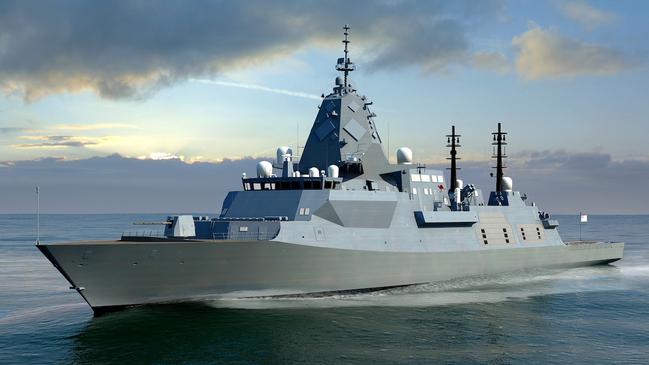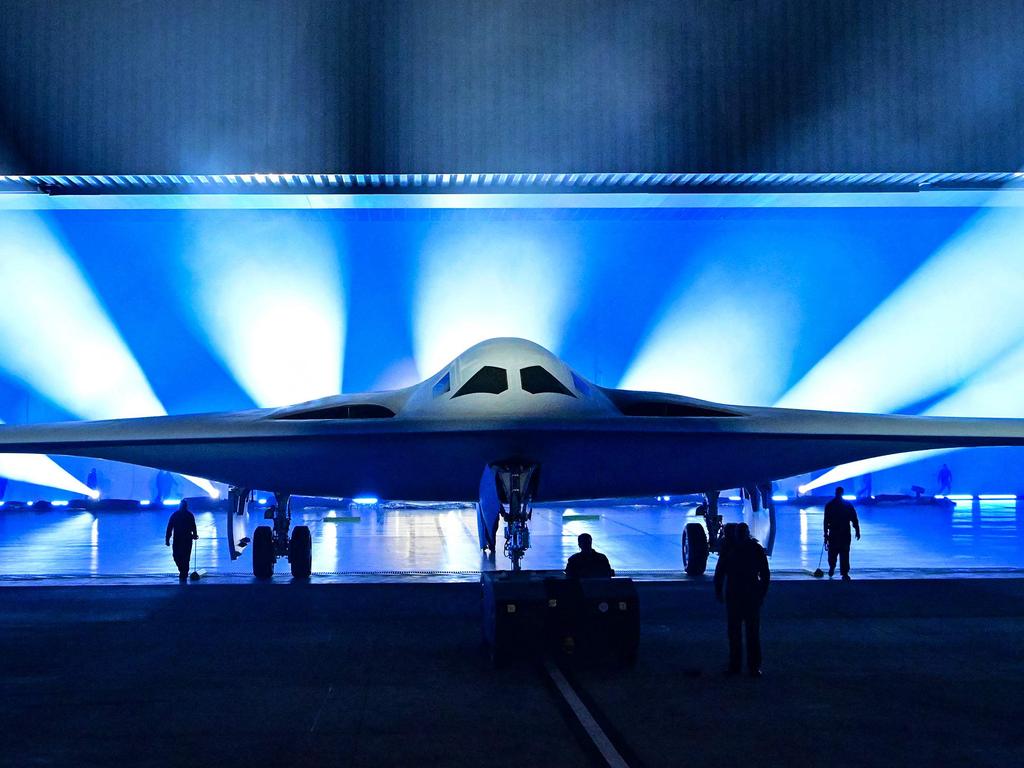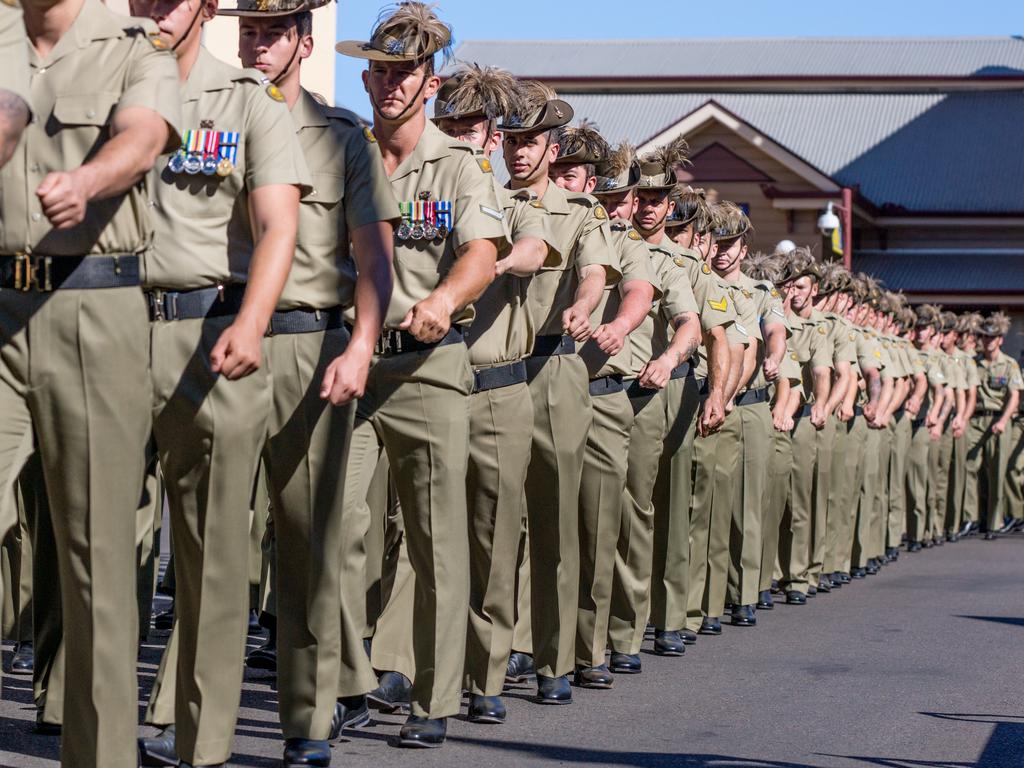Defence Strategic Review proposes smaller, faster warships for a ‘more lethal’ Australian navy
The government has flagged a redesign of the navy around greater numbers of smaller warships such as fast corvettes, in a potential blow to the $45bn Hunter-class frigate program.

The Albanese government has flagged a redesign of the navy around greater numbers of smaller warships such as fast corvettes, in a potential blow to the troubled $45bn Hunter-class frigate program.
But the likely shift towards procuring smaller missile boats rather than larger frigates and destroyers has been put off for up to five months, with a new review to determine the navy’s requirements by the end of September.
The review calls for a surface fleet with “enhanced lethality” to complement Australia’s promised nuclear submarines, including “a larger number of smaller surface vessels”.
“This would significantly increase navy’s capability through a greater number of lethal vessels with enhanced long-range strike (maritime and land) and air defence capabilities, together with the ability to provide presence in our northern maritime approaches,” it says.
But the review puts on hold any decisions to procure corvettes or cut back the Hunter-class program’s from its nine-vessel order, despite warnings of unprecedented strategic urgency.
Defence Minister Richard Marles defended the “short, sharp” analysis of the navy’s surface capabilities, saying the government was considering the fleet’s long-term structure in a way that would not hold up current programs.
The recommendation will alarm British shipbuilder BAE Systems, which is responsible for the troubled Hunter-class frigate program, which isn’t due to deliver its first vessel until the early 2030s.
On the advice of the defence strategic review, the government will adopt a strategy of area “denial”, with new land, sea and air capabilities to hold adversaries at bay over longer distances.
“The development of a strategy of denial for the ADF is key in our ability to deny an adversary freedom of action to militarily coerce Australia and to operate against Australia without being held at risk,” the review says.
The army gets a new mandate to expand its amphibious capabilities; the navy will be tasked with “sea denial operations”; and the air force will hone its ability to deliver troops to regional hot spots.
The army will be “transformed and optimised” to operate in the island archipelagos to Australia’s north, with new land-based missile systems to prevent enemies from securing strategic beachheads to attack the Australian mainland.
The service will also be responsible for air and missile defence systems, and mechanised operations with a single armoured brigade.
To fulfil its new priority roles, the government will fast-track delivery of new landing vessels and land-based missile systems.
As previously reported, the army will get additional HiMARS missile launchers together with Precision Strike Missiles, and a new land-based anti-ship missile capability. The delivery of both missile systems will be accelerated.
But the number of infantry fighting vehicles to be procured for the army is being slashed from 450 to 129, saving the defence budget billions. A second regiment of self-propelled howitzers is being cancelled as they “do not provide the required range or lethality”.
The air force’s role is largely unchanged, but will be strengthened with new missiles and the addition of new unmanned combat drones.
Boeing Australia’s in-development Ghost Bat drone “should be a priority for collaborative development with the United States”, the review says.
The review ruled out the acquisition of the US’s newest stealth bomber, the B-21 Raider, saying “we do not consider the B-21 to be a suitable option for consideration”.
It is also silent on whether the RAAF will exercise its longstanding option to get another squadron of F-35A joint strike fighters, which would expand the fleet from 72 to 100.
But the review says the stealth jets “must be able to operate” new long-range anti-ship missiles, which have a range of about 560km and are currently only able to be used by the RAAF’s F/A-18F Super Hornets.
The F-35s will also be upgraded to operate the Joint Strike Missile – a land attack weapon with a range of about 550km.
Cyber and targeting systems will be scaled-up across the ADF, with hardened networks, a bigger Defence cyber workforce, and new hardware to operate advanced missile systems, undersea warfare and missile defence.
Space capabilities will also be strengthened but the review rules out the creation of a separate “space force”.
The ADF’s Space Command will instead be brought under the umbrella of the ADF’s Joint Capabilities Group “to maximise its effectiveness”.








To join the conversation, please log in. Don't have an account? Register
Join the conversation, you are commenting as Logout